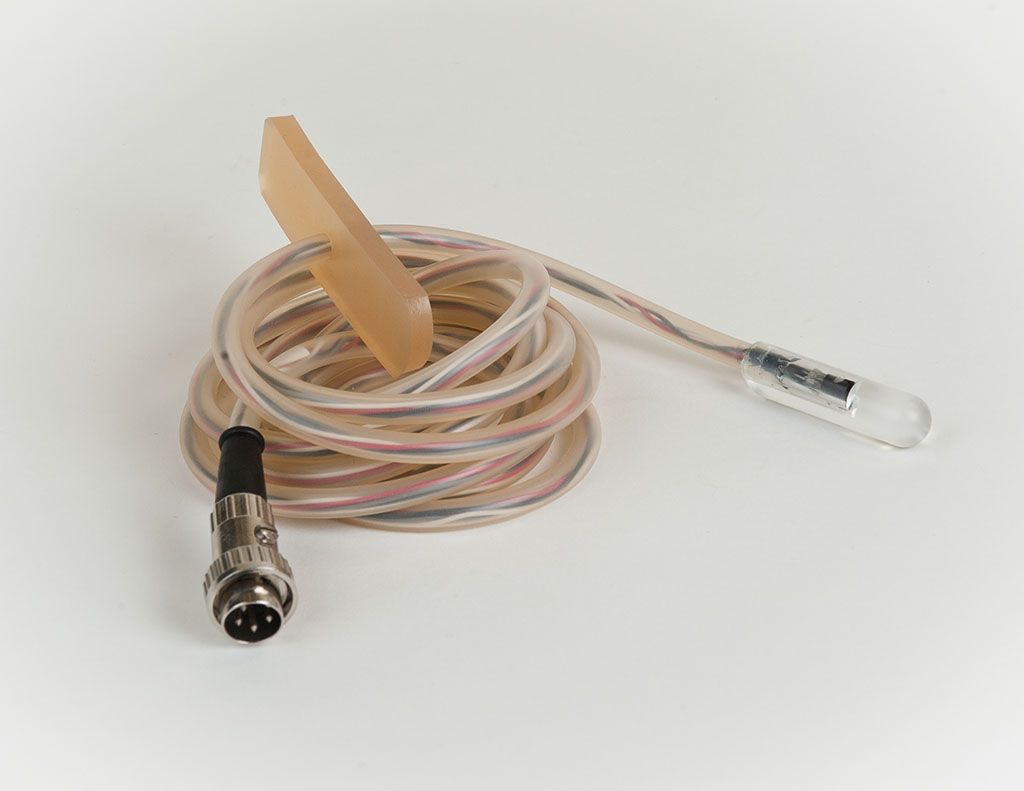 |
| A vaginal photoplethysmograph. It knows what you like. Even if you disagree. |
Partly because there's a part where they make the argument that a woman's "copulatory vocalizations" are supposed to excite other men and invite them to have sex with her too, and... NO and EW and WHAT.
But mostly, I gave up on Sex at Dawn because it's full of a problem a lot of sex research suffers from--the love of circumstantial evidence.
Want to know why women moan during sex? (Or, for starters, whether all women moan during sex?) What would your first step in answering this question be?
Well, if you're a Serious Sex Researcher, some approaches you might take:
• Watch female chimps having sex.
• Gather media about fictional women making sex noises.
• Dissect female cadavers, searching for the sex-noise node of the brain.
• Read anthropological accounts of the sex-noise practices of women in isolated hunter-gatherer societies.
• Search the literature for historical mentions of women making sex noises.
• Hook up men and women's genitalia to "arousal-measuring" equipment and scan their brains while they listen to sex noises.
• Speculate at length about the sex noises of "cavewomen."
And one approach you would never, ever take because it's just hopelessly unscientific:
• Ask some women "hey, why do you moan during sex?"
Don't get me wrong, I don't think sex science should consist entirely of self-reports, or that cross-cultural and biological perspectives don't have a place in it. But too often, sex research seems to consist of everything but listening to people about their own experiences. It's the meticulous aggregation of every possible piece of circumstantial evidence--and no questions for the eyewitnesses.
I have a special hatred for vaginal photoplethysmography, and not just because it's very hard to type. This is a device that measures bloodflow in the vagina, and therefore purportedly the sexual arousal of the vagina's owner. Except that study after study shows that subjects' self-reports of their arousal tend to correlate very badly with their photoplethingy readings. The photothingy says they're aroused, the human beings say they're not feeling a thing. Naturally, this is reported in the pop-sci press as "Vaginal Blood Flow Not A Reliable Indicator Of Arousal, New Method Needed."
Haha, I'm just messing with you. I've never seen that headline. It's always reported as "Women Not Aware Of Their Own Arousal." (The first link opens with chimps, too! Oh, those fucking chimps. Fascinating creatures and all that, but I don't understand the compulsion to study chimps to understand human sexuality, when actual humans are readily available.) You couldn't get away with this in other branches of science. If you measured water ice at 20ºC and declared "my thermometer is perfect; this ice must be defective," you'd get laughed out of the lab. But when it comes to confirming gross old "they don't know what they really want" stereotypes about women, anything goes.
(Don't worry, though; if you have a penis, its degree of erection will also be trusted over your word. Because no one ever got a hard-on when they didn't want to have sex, right?)
I'm a science nerd at heart. I like the idea of applying science to sex. (I'm still trying to find the right excuse to post the pictures from that time we measured my Kegel Power. About half a kilo, by the way.) I have no ambition to replace rigorously analyzed data and reproducible double-blind experiments with poems about lilies unfolding. I think expanding our knowledge of human sexuality is a noble goal in biology, psychology, and sociology, and objective measures are necessary to achieve that.
But I also think that if you want to study humans, study humans. If you want to study people's feelings, ask them about their feelings. Cadavers and fMRIs and chimps should be secondary tools to validate what you learn from humans, not the other way around.
In nursing, the definition of pain is simply "whatever the patient says it is," and yet we've still been able to create a massive body of work about the causes, effects, and control of pain. Our understanding of pain is human and subjective, and still manages to produce precise and meaningful data. There's no reason we can't study sex this way as well.

